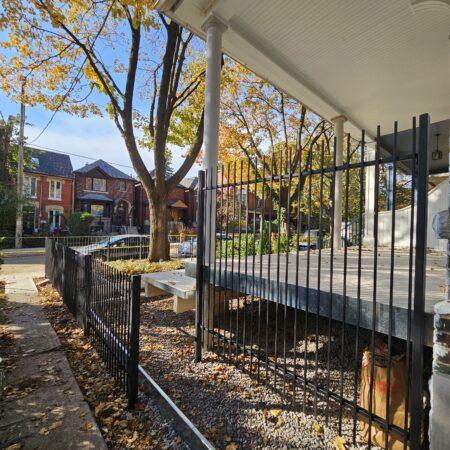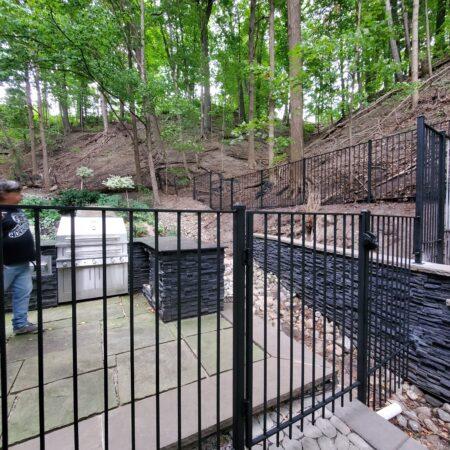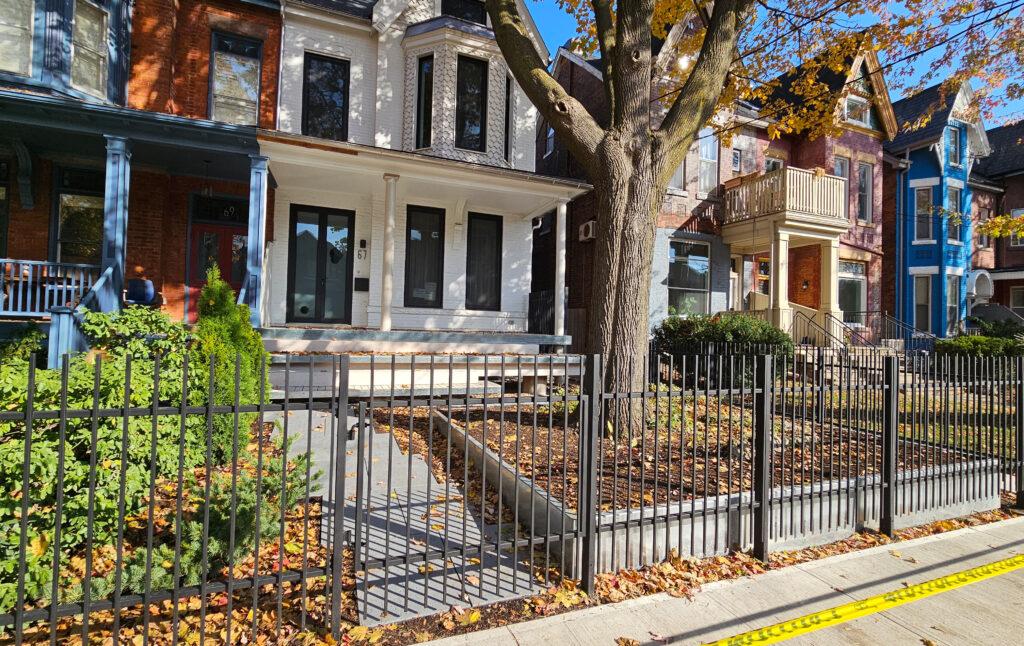Last Updated on November 21, 2024 by chanuka chanuka.23e2
Updated: November 21, 2024
Key Takeaways
- Local Regulations are Critical: Adhering to Etobicoke’s fence guidelines, including height, setbacks, and material restrictions, ensures compliance and avoids fines.
- Slope Adaptations: Building on a slope requires taller posts on the uphill side and angled rails for a consistent appearance.
- Secure Foundation: Properly anchored posts using concrete or gravel ensure long-term stability, especially on uneven terrain.
- Customizable Styles: Selecting a fence style that suits your landscape and home enhances aesthetics while serving functional needs.
- Maintenance Matters: Finishing with protective coatings and routine upkeep extends the life and durability of your fence.
Are you a proud homeowner in Etobicoke, Ontario, looking to enhance your property’s security, privacy, and aesthetic appeal? One excellent way to achieve this is by installing a fence. However, if your yard features varying terrain, like slopes or uneven ground, you might be wondering how to build a fence that both looks great and serves its purpose. This blog, brought to you by Art Metal, will guide you through the process of building a fence on a slope, while adhering to local regulations in Etobicoke.

Step 1: Check Local Regulations
Before you start any fencing project, it’s crucial to familiarize yourself with Etobicoke’s specific regulations regarding fences. These regulations vary from one municipality to another and can impact the design, height, and materials you can use. Some common guidelines include:
- Maximum fence height: Etobicoke often limits fence heights to 2.1 meters (7 feet) in the rear yard and 1.2 meters (4 feet) in the front yard.
- Setback rules: Fences typically must be set back a specific distance from property lines and sidewalks.
- Fence materials: Certain areas may have restrictions on fence materials to maintain neighborhood aesthetics.
By understanding and adhering to these regulations, you can avoid costly fines and redesigns in the future.
Step 2: Gather Your Materials and Tools
Once you have a solid understanding of the local regulations, it’s time to gather the necessary materials and tools. For a fence built on a slope, you will need:
- Fence posts
- Rails
- Pickets or panels
- Concrete or gravel
- Level
- Tape measure
- Shovel
- Post hole digger
- Saw
- Screws or nails
- String line
- Brackets
Step 3: Plan Your Fence
To build a fence on a slope, you must plan accordingly. Consider the following factors:
- The slope’s gradient: Assess the degree of the slope. Is it gentle or steep? This will determine the length of your posts and the spacing between them.
- Fence style: Choose a style that complements your home and landscape, ensuring it can be adapted to the slope.
- Post placement: Posts should be installed vertically. On a slope, some will need to be taller to maintain a consistent top rail height. Use a level and string line to ensure accurate placement.

Step 4: Set Your Posts
Begin by digging the post holes. For sloping ground, the uphill posts will need to be taller than those on the downhill side. Make sure the posts are firmly anchored in concrete or gravel, in accordance with local regulations. It’s essential that your posts are level and secure for a sturdy fence.
Step 5: Install Rails and Pickets
Attach the horizontal rails to the posts, ensuring they are level. To accommodate the slope, cut the rails at an angle to fit the contour. For picket or panel fences, you may need to adjust the spacing as you move down the slope to maintain a consistent appearance.

Step 6: Add Bracing and Support
Fencing on a slope can be more susceptible to structural issues, so it’s wise to include bracing and support to ensure longevity and stability. This may include diagonal braces or additional reinforcement on the downhill side of the slope.
Step 7: Finish and Maintain
After completing the installation, finish your fence with appropriate staining or painting to protect it from the elements. Regular maintenance is essential to ensure its durability and longevity.
Conclusion
Building a fence on a slope can be a challenging but rewarding DIY project. By following the steps outlined above and adhering to Etobicoke’s specific regulations, you can create a beautiful and functional fence that enhances the value and aesthetics of your property.
Art Metal is here to help you every step of the way, offering expert advice and high-quality materials for your fence project in Etobicoke, Ontario. If you need assistance or have any questions, don’t hesitate to reach out to our team. Happy building!
Call Us Today
Dealing with the challenges of installing a fence on uneven terrain? Art Metal has the solution. We’re experts in crafting and installing fences that conquer slopes. We can manufacture and install, turning your property into a masterpiece. Ready to transform your landscape? Contact us today!
FAQs
What are the height restrictions for fences in Etobicoke?
Last Updated on November 21, 2024 by chanuka chanuka.23e2
In Etobicoke, fences are typically limited to 2.1 meters (7 feet) in rear yards and 1.2 meters (4 feet) in front yards.
Can I build a fence directly on the property line?
Last Updated on November 21, 2024 by chanuka chanuka.23e2
Setback rules usually require fences to be a specific distance from property lines and sidewalks. Verify with local regulations for precise requirements.
What materials are best for sloped fences?
Last Updated on November 21, 2024 by chanuka chanuka.23e2
Durable materials such as treated wood, vinyl, or metal work well for sloped fences. The choice depends on your budget and desired aesthetics.
Do sloped fences require additional support?
Last Updated on November 21, 2024 by chanuka chanuka.23e2
Yes, sloped fences often need bracing or reinforcement to ensure stability and longevity, especially on steep gradients.
Can I install a sloped fence myself?
Last Updated on November 21, 2024 by chanuka chanuka.23e2
Yes, but it requires careful planning, accurate measurements, and proper tools. Hiring professionals like Art Metal can simplify the process.

 Chat
Chat 








